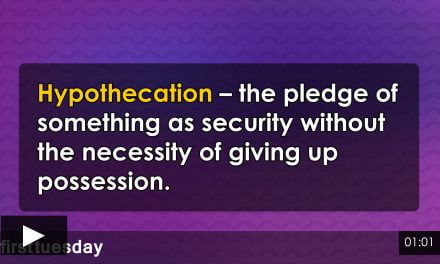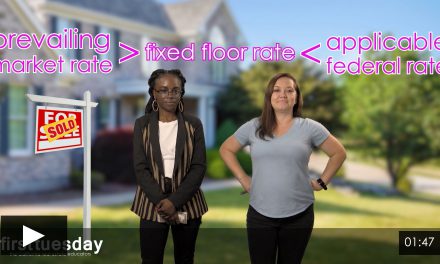This article examines the use of energy mortgages to cut home operating costs, how they work and how a homebuyer can obtain one.
Features to look for when considering a home are mostly unknown to first-time homebuyers. They frequently focus on aesthetic qualities, such as crown molding and floor plans, rather than the more fundamental and long-term aspects of ownership, such as energy efficiency — a feature fast becoming valuable to buyers as energy-rated homes are here, part of property disclosures and pricing. An energy-efficient home purchase allows the lender, if advised, to lend more money based on the energy savings over homes rated with less efficiency.
Consider the homebuyer who has found his dream home: a 1950s fixer-upper. The bad news? It heats and cools the entire neighborhood through its outdated windows and insufficient insulation. Here, a knowledgeable buyer’s agent recommends an energy mortgage.
An energy mortgage provides financing to fund both the purchase price and the costs of improvements to upgrade the energy efficiency of the property. The cost of the energy improvements are set aside on closing in escrow to be disbursed directly to contractors as the energy improvements progress to completion. Since the costs are funded by the loan proceeds, the homeowner pays for the improvements over time in the mortgage payments. The homeowner receives a dual set of benefit from the improvements:
- the value of the home is increased by the cost of improvements; and
- the monthly operating costs are cut through reduced energy bills.
To put this in perspective, imagine that the price the buyer pays for the 1950s fixer-upper is $200,000. The homebuyer, on the advice of his selling agent, obtains an energy mortgage to finance the purchase and $3,000 to install a tankless water heater. Once the energy improvements are completed, the monthly power bill will go from $186 to $93. With 20% down and a 5.85% interest rate, the homeowner ultimately will save $68 a month if he opts for the energy mortgage and the improvements are completed.
| No Energy Improvements | With Energy Improvements | |
| Price of House | $200,000 | $203,000 |
| Down payment | $6,000 | $6,090 |
| Loan Amount (20% down payment) | $160,000 | $162,400 |
| Interest | 5.85% | 5.85% |
| Monthly (principal, interest, loan payment) | $1673 | $1698 |
| Average Power Bill | $186 | $93 |
| Monthly Expenditures | $1859 | $1791 |
| Monthly Savings | $68 | |
Table 1: Monthly Savings based on energy improvements from HUD’s Energy Efficient Homeowner Guide
In the example in Table 1, simply by choosing an energy mortgage, making the necessary improvements and reducing the utility costs of the home, the homeowner will have an annual reduction in ownership costs — savings — of $816.
Energy mortgage options
Energy mortgages can be used to finance either new or existing home purchases. A homeowner can also take out an energy mortgage when refinancing the loan on their home. When an already energy-efficient home is bought with funding from an energy mortgage, the lender accounts for the monthly energy savings based on the home’s efficient heating and cooling systems and adds the savings to the homebuyer’s monthly income. This allows a homebuyer to qualify for a larger loan amount, enabling them to purchase a better quality home or finance energy improvements to achieve the better quality.
Energy mortgages have two classifications:
- Energy Improvement Mortgages (EIMs) allow a homeowner or homebuyer to finance cost-effective energy upgrades (upgrades which must pay for themselves through utility savings) of an existing low-rated home through the mortgage loan; or
- Energy Efficient Mortgages (EEMs) increase a homebuyer’s purchasing power by using the energy savings during ownership due to the purchase of an already rated energy-efficient home and applying the energy savings to his debt-to-income (DTI) loan qualification ratio, thus increasing the homebuyer’s loan amount and price range for purchasing a home.
The buyer’s agent, with knowledge of the various versions of energy mortgages, is better able to advise his buyer which loan is most beneficial. The most widely used energy mortgages are from Fannie Mae , Freddie Mac, the Federal Housing Authority (FHA) –insured loans and Veterans’ Affairs (VA) insured loans.
As you can see in Table 2, the various versions of energy mortgages differ on specific provisions. All energy mortgages are available on homes for purchase or refinance, but are not offered for home equity loans. VA-insured energy mortgages have very different provisions, but Fannie Mae, Freddie Mac and the FHA-insured mortgages are similarly structured.
Except for VA insured loans, lenders only offer energy mortgages on owner-occupied residential property. The maximum loan amount varies, but all are based on the lender’s loan limits. Improvement financing and down payment requirements also differ for each lender, but all lenders, except for the VA, base them on the appraised value or purchase price of the property.
| Fannie Mae Energy Mortgage | Freddie Mac Energy Mortgage | FHA Energy Mortgage Program | VA Energy Mortgage Program | |
| Advantages of Energy Efficient Loa | Energy improvements can be completed prior to or after closing. | Value of energy improvements added to property value to set loan-to-value ratio (LTV) |
|
|
| Eligible Properties |
|
|
|
|
| Maximum Loan Amount |
| Equal to conventional loan limits, currently $417,000. | Total loan amount can exceed FHA loan limit (based on location) if improvements are cost effective. | Total loan amount (after adding energy improvement costs) cannot exceed VA loan limits. |
| Improvement Financing | Can finance 100% of energy improvements if:
| Can finance 100% of energy improvements if:
|
| Can finance 100% of the energy improvements if:
|
| Down payment | Requires down payment related to the LTV of the loan including energy improvements. | Requires down payment related to the LTV of the loan including energy improvements. |
| No additional down payment on energy improvements if energy improvements can create a positive cash flow |
| Maximum LTV |
|
| Final LTV may exceed 100% of appraised value if energy improvements have a present value greater than the cost of upgrades. | Final LTV may exceed 100% appraised value if energy improvement measures have positive cash flow. |
Table 2: Energy Mortgage Comparisons compiled from RESNET and ENERGY STAR
The terms of an energy-efficient mortgage can scare off some sellers since most energy-efficient mortgages require a 60 to 90-day escrow period rather than the standard 30 to 45-day escrow. However, in the current 2010-2011 housing market, a seller — even a speculator — is unlikely to refuse a purchase offer due to an extended escrow period. Real estate owned (REO) properties being marketed by lenders may not be available for energy rating financing since lenders are more interested in liquidation, the standard of a different green.
Before the property can qualify for an energy improvement mortgage (EIM), a Home Energy Ratings System (HERS) report on the property is needed to provide the lender with an evaluation of the home’s energy efficiency. Much like a miles-per-gallon rating for a car, the HERS report quantifies the energy efficiency for comparison by analyzing factors such as insulation, appliance efficiency, window types, local climate and utility rates.
A HERS report includes:
- overall rating index of the house without energy efficient improvements;
- recommended cost-effective energy upgrades;
- estimates of the cost, annual savings, and useful life of the upgrades;
- improved rating index after the installation of recommended upgrades; and
- estimated annual total energy cost for home before and after upgrades.
The rating index is between 1 and 100, with a lower index figure indicating greater efficiency. A lesser HERS rating means less energy consumption, or said another way, a lesser rating indicates more energy efficiency; thus, less is more. For $300 to $800, a home inspector or a HERS Rater can issue a HERS report. The cost of the HERS report can be financed by the mortgage or paid for by the buyer or seller. [For more information regarding who can do a HERS report, see the November 2010 first tuesday Legislative Watch, Home inspectors may perform HERS home energy audits.]
To establish the final mortgage amount, including the funds for the improvements, the homebuyer must obtain fixed bids from contractors for the improvements. While most homebuyers hire a contractor to do the improvements, the homebuyer can do the energy improvements himself if he has extensive construction experience or an applicable contractor’s license (and the lender’s approval), but he is barred from collecting money from the escrow account for his labor.
The HERS Rater typically solicits bids from many green construction contractors, and he will compile the fixed-bids he receives into a one-page bid comparison for the buyer. Based on the buyer’s budget and the terms of his specific EIM loan, the homebuyer and the Rater choose a contractor and submit the final paperwork, including copies of the bids, to the lender.
With the HERS paperwork, the lender calculates the savings in utility bills due to reduced energy consumption upon making the recommended upgrades. Once the projected monthly savings are calculated, the future utility savings are added to the homebuyer’s income to lower the DTI ratio. This income adjustment increases the mortgage amount the homebuyer is qualified to borrow. [For more information on the HERS report, see the August 2010 first tuesday article, Energy efficiency in the home: Not just for hippies.]
Once committed, the lender disburses the purchase-assist funds to the buyer’s purchase escrow. The separate energy improvement funds are placed in escrow, and the lender then disburses the funds to the contractor on completion of the energy improvements.
Upon completion of the work, the Rater performs a final inspection and sets the property’s final energy rating. As long as the work meets the energy improvement’s specifications, the funds in the escrow account are disbursed to the contractor.
















Excellent information. Thank You.
A Key question remains however. Who are the Green Lenders, that have this knowledge, and can process loans without me having to educate them first??? I have yet to find one where the in-house brokers, even want to get involved with these kinds of loans. Too much to learn and too many hoops to jump through! So far – Direct Lenders who specialize in Green loans is the only way to go. Unfortunately, they are hard to find! A preferred list would be nice???